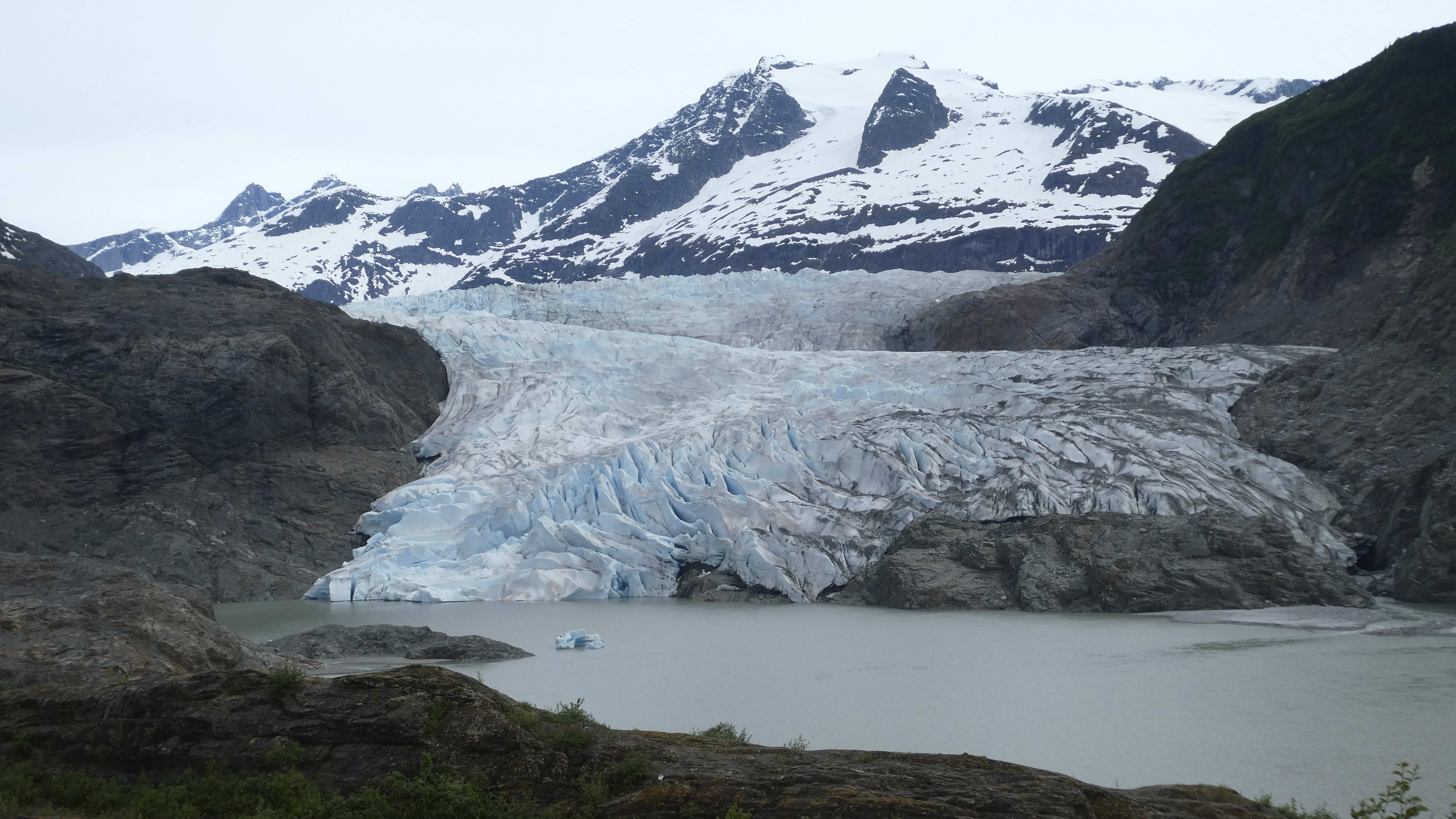A snowy winter helped Great Salt Lake water levels rise 3 feet above historic low


Thanks to record snowfall, the Great Salt Lake's water levels are rising — welcome news to researchers who issued a bleak report in January, warning that the lake was on track to disappear in the next five years.
In November, the Great Salt Lake — home to brine shrimp, amphibians, birds, plants, and reptiles — hit a record low of 4,188.6 feet above sea level, Brigham Young University researchers said, losing more than 70 percent of its water since 1850. The Great Salt Lake is fed by three rivers that rely on snow runoff, and in its report, the BYU team said unsustainable water use, water being diverted away for agriculture and business, and drought is "destroying" the lake. Without strict water conservation efforts, the report said, the Great Salt Lake would not make it.
Utah had a very snowy winter, with eight ski resorts receiving record snowfall. As of April 5, the Great Salt Lake has risen three feet since November, and in the next few months, as the snowpack melts, will fill up even more, with Utah's Division of Water Resources saying the lake level could increase by three to four feet. This year's snowpack is "nothing short of miraculous," BYU ecologist Ben Abbott, lead author of the January report, told The Washington Post.
The Week
Escape your echo chamber. Get the facts behind the news, plus analysis from multiple perspectives.

Sign up for The Week's Free Newsletters
From our morning news briefing to a weekly Good News Newsletter, get the best of The Week delivered directly to your inbox.
From our morning news briefing to a weekly Good News Newsletter, get the best of The Week delivered directly to your inbox.
The lake is still six feet below what Abbott said is "the minimum acceptable elevation for the lake's ecological and economic health," and in order to fully replenish the Great Salt Lake, "we need to reduce our consumptive water use by 30 to 50 percent." Candice Hasenyager, director of Utah's Division of Water Resources, told the Post that the situation has definitely improved at the Great Salt Lake and should be celebrated, but "we must continue to prioritize water conservation efforts and make sustainable water management decisions for the future of this vital ecosystem and for water users throughout the basin."
A free daily email with the biggest news stories of the day – and the best features from TheWeek.com
Catherine Garcia has worked as a senior writer at The Week since 2014. Her writing and reporting have appeared in Entertainment Weekly, The New York Times, Wirecutter, NBC News and "The Book of Jezebel," among others. She's a graduate of the University of Redlands and the Columbia University Graduate School of Journalism.
-
 Political cartoons for January 4
Political cartoons for January 4Cartoons Sunday's political cartoons include a resolution to learn a new language, and new names in Hades and on battleships
-
 The ultimate films of 2025 by genre
The ultimate films of 2025 by genreThe Week Recommends From comedies to thrillers, documentaries to animations, 2025 featured some unforgettable film moments
-
 Political cartoons for January 3
Political cartoons for January 3Cartoons Saturday's political cartoons include citizen journalists, self-reflective AI, and Donald Trump's transparency
-
 Row over pole-dancing skeleton
Row over pole-dancing skeletonTall Tales And other stories from the stranger side of life
-
 Nobody seems surprised Wagner's Prigozhin died under suspicious circumstances
Nobody seems surprised Wagner's Prigozhin died under suspicious circumstancesSpeed Read
-
 Western mountain climbers allegedly left Pakistani porter to die on K2
Western mountain climbers allegedly left Pakistani porter to die on K2Speed Read
-
 'Circular saw blades' divide controversial Rio Grande buoys installed by Texas governor
'Circular saw blades' divide controversial Rio Grande buoys installed by Texas governorSpeed Read
-
 Los Angeles city workers stage 1-day walkout over labor conditions
Los Angeles city workers stage 1-day walkout over labor conditionsSpeed Read
-
 Mega Millions jackpot climbs to an estimated $1.55 billion
Mega Millions jackpot climbs to an estimated $1.55 billionSpeed Read
-
 Bangladesh dealing with worst dengue fever outbreak on record
Bangladesh dealing with worst dengue fever outbreak on recordSpeed Read
-
 Glacial outburst flooding in Juneau destroys homes
Glacial outburst flooding in Juneau destroys homesSpeed Read
